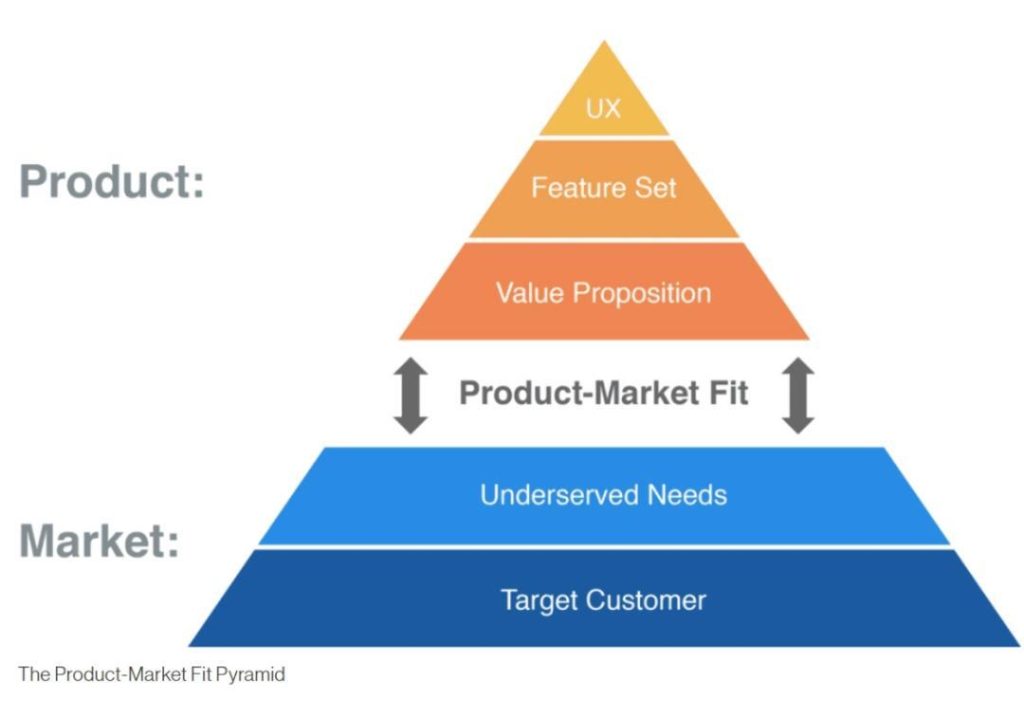
How do startups win product-market fit with AI?
In today’s fast-paced digital landscape, achieving product-market fit (PMF) is crucial for startups to stand out and succeed. However, the process of validating and refining ideas can be time-consuming and resource-intensive. This is where Artificial Intelligence (AI) comes in – a game-changer that accelerates PMF by processing vast amounts of data in real-time.
In this blog post, we’ll explore how startups can leverage AI to analyze user behavior patterns, identify demand trends, and segment audiences for targeted testing. By processing feedback in real-time, AI helps teams adjust user flows, improve onboarding, and fine-tune features – ultimately leading to a product that resonates with customers.
What is product-market fit?
Before diving into the role of AI, let’s briefly define product-market fit. PMF refers to the point where a product meets the needs and demands of its target market, resulting in rapid growth and adoption. It’s the sweet spot where a startup’s product or service is so well-suited to a specific audience that it becomes an essential part of their daily lives.
The traditional PMF process
In the past, achieving PMF required a significant amount of trial and error. Startups would often launch a minimum viable product (MVP) and then iterate based on user feedback and analytics. This process could take months or even years, during which time startups might encounter costly mistakes and false starts.
The AI-powered PMF process
AI changes the game by enabling startups to validate and refine their ideas at an unprecedented speed. Here’s how:
- User behavior analysis: AI-powered tools can analyze vast amounts of user data, including browsing behavior, search queries, and social media interactions. This helps startups identify patterns and trends that indicate demand for specific features or functionalities.
- Demand trend identification: AI can analyze demand trends across multiple channels, including social media, forums, and review websites. This enables startups to identify areas of high demand and adjust their product or service accordingly.
- Audience segmentation: AI-powered tools can segment audiences based on demographics, behavior, and preferences. This allows startups to target specific groups with tailored messaging, reducing the risk of wasting resources on uninterested audiences.
- Real-time feedback analysis: AI can process user feedback in real-time, providing startups with instant insights into what’s working and what’s not. This enables teams to make data-driven decisions and iterate quickly.
- User flow optimization: AI-powered tools can analyze user flows, identifying pain points and areas for improvement. This helps startups optimize the user experience, reducing friction and increasing engagement.
- Onboarding and feature refinement: AI can help startups refine onboarding processes and feature sets based on user behavior and feedback. This ensures that new users have a seamless experience and that the product or service meets their evolving needs.
Real-world examples
Several startups have leveraged AI to achieve product-market fit. For example:
- Netflix: The streaming giant uses AI to analyze user behavior and preferences, recommending personalized content and improving the overall viewing experience.
- Dropbox: The file-sharing platform uses AI to analyze user behavior, identifying areas for improvement in the onboarding process and feature set.
- Airbnb: The accommodation booking platform uses AI to analyze user reviews and ratings, refining the search and booking experience to meet the evolving needs of its users.
Conclusion
In today’s fast-paced digital landscape, achieving product-market fit is crucial for startups. AI accelerates PMF by processing vast amounts of data in real-time, enabling startups to analyze user behavior patterns, identify demand trends, and segment audiences for targeted testing. By leveraging AI, startups can reduce the time and resources required to validate and refine ideas, increasing the chances of success.
News Source:
https://www.growthjockey.com/blogs/how-to-achieve-product-market-fit-in-the-age-of-ai






